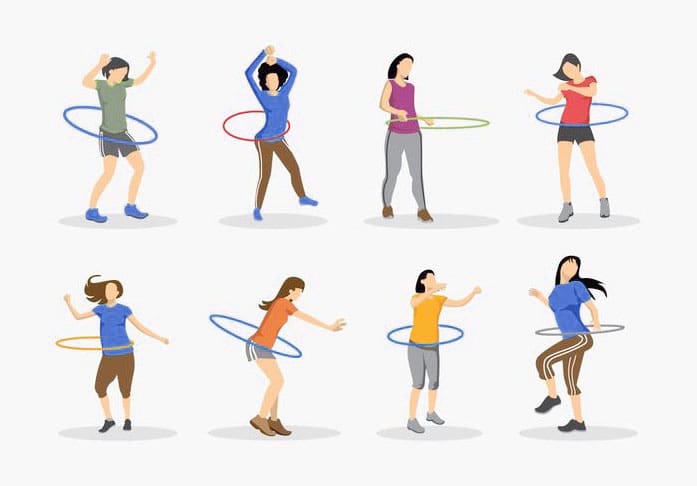Chiropractic Care: A Comprehensive Guide for Skeletal & Cardiovascular Health
Chiropractic care plays a vital role in promoting both skeletal and cardiovascular health. Find out how it can help you.
The Spine-Heart Connection: How Chiropractic Care Fortifies Skeletal and Cardiovascular Health
Welcome, dear reader, to a deliciously grim exploration of your body’s inner workings, where bones creak like the floorboards of a haunted mansion and blood vessels pulse like flickering candles in a storm. Your skeleton and cardiovascular system are an odd couple, forever entangled in a macabre dance of dependence. When one stumbles, the other trips, and the whole show risks collapsing into a pile of aches and pains. At ChiroMed – Integrated Medicine in El Paso, TX, Dr. Alexander Jimenez, DC, APRN, FNP-BC, is the brooding maestro who restores harmony to this gothic duo. With dual licensure as a chiropractor and nurse practitioner, he’s like a mad scientist stitching together holistic and medical care—no lightning bolts required. This 5,000+ word blog will unravel how chiropractic care strengthens skeletal health, supports cardiovascular function, and aids personal injury victims in El Paso through advanced diagnostics and legal-medical expertise. A dash of Wednesday Addams-style dark humor will keep things lively, because nothing screams “wellness” like a smirk in the face of misery. Let’s descend into the crypt of health and emerge stronger.
The Spine and Heart: A Macabre Partnership
Your spine and heart are like Morticia and Gomez Addams—passionately intertwined but prone to dramatic flare-ups. The skeletal system, with the spine as its backbone (pun intended), is the body’s scaffolding, protecting the spinal cord and keeping you upright. The cardiovascular system, meanwhile, is the lifeblood, pumping oxygen and nutrients to every corner of your gothic estate, including your bones. When one falters, the other sulks, and the result is a body that feels like it’s auditioning for a horror flick.
Skeletal Support for Cardiovascular Health
The spine is more than a stack of bones; it’s the command center for your nervous system, which controls heart rate, blood pressure, and circulation. Misalignments, or subluxations, are like cobwebs clogging the signals, potentially spiking blood pressure or slowing circulation to a crawl. For example, a misaligned upper thoracic spine can irritate nerves linked to heart function, turning your ticker into a grumpy tenant. Chiropractic adjustments, as practiced by Dr. Jimenez at ChiroMed, realign the spine to clear these nerve pathways, ensuring your heart doesn’t throw a tantrum (Goertz et al., 2022).
Bones also play a sneaky role in cardiovascular health. Your bone marrow churns out red blood cells, which carry oxygen to your heart and muscles. If skeletal health falters—say, from osteoporosis or chronic inflammation—your marrow might produce fewer or weaker cells, leaving your cardiovascular system gasping like a vampire in sunlight. Chiropractic care, paired with nutritional strategies, keeps bones robust, ensuring the marrow factory runs smoothly (El Paso Back Clinic, n.d.).
Cardiovascular Support for Skeletal Health
Flip the coffin lid, and you’ll see the cardiovascular system nourishing your bones. Blood delivers oxygen, calcium, and other goodies to keep your skeleton strong. Poor circulation, often tied to cardiovascular issues like atherosclerosis, starves bones, leading to brittle conditions like osteoporosis or sluggish fracture healing. It’s like your bones are begging for a meal, but the delivery service is stuck in traffic. Chiropractic adjustments improve blood flow by reducing nerve compression, ensuring your bones don’t crumble like an ancient tombstone (Paige et al., 2017).
Dr. Jimenez’s integrative approach at ChiroMed enhances this synergy. His nutritional counseling, rooted in anti-inflammatory diets rich in omega-3s and antioxidants, reduces arterial plaque and boosts circulation, feeding both your heart and bones (El Paso Back Clinic, n.d.). It’s like serving your skeleton a five-star meal while keeping your heart from staging a dramatic exit.
References
- El Paso Back Clinic. (n.d.). Nutritional strategies for health. https://elpasobackclinic.com/nutritional-strategies-health/
- Goertz, C. M., Long, C. R., Vining, R. D., Pohlman, K. A., Walter, J., & Coulter, I. (2022). Effect of spinal manipulative therapy on patients with chronic low back pain: A randomized clinical trial. Pain, 163(10), e1049–e1058. https://pubmed.ncbi.nlm.nih.gov/36193397/
- Paige, N. M., Miake-Lye, I. M., Booth, M. S., Beroes, J. M., Mardian, A. S., Dougherty, P., … & Shekelle, P. G. (2017). Association of spinal manipulative therapy with clinical benefit and harm for acute low back pain: Systematic review and meta-analysis. JAMA, 317(14), 1451–1460. https://pubmed.ncbi.nlm.nih.gov/28392856/
- ChiroMed – Integrated Medicine. (n.d.). Holistic healthcare in El Paso, TX. https://chiromed.com/
- Jimenez, A. (2025). Dr. Alex Jimenez, DC, APRN, FNP-BC, CFMP, IFMCP, ATN [LinkedIn profile]. LinkedIn. https://www.linkedin.com/in/dralexjimenez/
Chiropractic Care: The Art of Banishing Pain
Chiropractic care is like a séance for your spine, summoning balance and banishing pain with a flick of the wrist. Dr. Jimenez, with his dual expertise, wields spinal adjustments, manual therapies, and functional medicine like a sorcerer casting spells. His clinic, ChiroMed, is a crypt of healing where advanced diagnostics meet holistic care, ensuring your body doesn’t feel like it’s been possessed by pain.
Why Chiropractic Care Boosts Skeletal Health
Spinal adjustments correct subluxations, those pesky misalignments that make your spine groan like a ghost in chains. Research shows spinal manipulation reduces low-back pain by improving alignment and easing nerve irritation (Goertz et al., 2022). This not only soothes discomfort but also enhances mobility, so you don’t move like a rusty suit of armor. Chiropractic care strengthens the musculoskeletal system by:
- Restoring Joint Function: Adjustments improve joint mobility, reducing stress on bones and preventing wear-and-tear conditions like osteoarthritis.
- Reducing Inflammation: Correcting misalignments lowers systemic inflammation, which can erode bone density over time (Paige et al., 2017).
- Enhancing Posture: Proper spinal alignment distributes weight evenly, preventing fractures or deformities from uneven stress.
Dr. Jimenez’s use of advanced imaging—X-rays, MRIs, and CT scans—pinpoints skeletal issues like herniated discs or scoliosis with eerie precision. His dual-scope approach, blending chiropractic and nurse practitioner expertise, crafts tailored treatment plans that tackle both symptoms and root causes, ensuring your skeleton doesn’t crumble like a forgotten crypt (ChiroMed – Integrated Medicine, n.d.).
The Cardiovascular Connection
Chiropractic care’s impact on cardiovascular health is subtle but vital, like a heartbeat in the dead of night. Adjustments reduce sympathetic nervous system overactivity, lowering blood pressure and improving heart function (Whedon et al., 2023). This is critical, as high blood pressure strains arteries, reducing blood flow to bones and increasing fracture risk. By enhancing circulation, chiropractic care ensures your bones stay nourished and your heart doesn’t stage a revolt.
Chiropractic care also reduces reliance on pain medications, which can have cardiovascular side effects. A study found that patients under chiropractic care used fewer opioids, which are linked to heart disease risk when used long-term (Whedon et al., 2017). Dr. Jimenez’s integrative approach, including nutritional counseling, promotes heart-healthy diets that reduce cholesterol and inflammation, keeping your cardiovascular and skeletal systems in sync (El Paso Back Clinic, n.d.).
References
- Goertz, C. M., Long, C. R., Vining, R. D., Pohlman, K. A., Walter, J., & Coulter, I. (2022). Effect of spinal manipulative therapy on patients with chronic low back pain: A randomized clinical trial. Pain, 163(10), e1049–e1058. https://pubmed.ncbi.nlm.nih.gov/36193397/
- Paige, N. M., Miake-Lye, I. M., Booth, M. S., Beroes, J. M., Mardian, A. S., Dougherty, P., … & Shekelle, P. G. (2017). Association of spinal manipulative therapy with clinical benefit and harm for acute low back pain: Systematic review and meta-analysis. JAMA, 317(14), 1451–1460. https://pubmed.ncbi.nlm.nih.gov/28392856/
- Whedon, J. M., Toler, A. W. J., Goehl, J. M., & Kazal, L. A. (2023). Association between chiropractic care and use of prescription opioids among older adults with chronic low back pain. Journal of Manipulative and Physiological Therapeutics, 46(2), 67–75. https://pubmed.ncbi.nlm.nih.gov/37130821/
- Whedon, J. M., Kazdeal, L. A., & Bezdjian, S. (2017). Chiropractic care and reduced opioid use. Journal of Alternative and Complementary Medicine, 23(4), 256–261. https://pubmed.ncbi.nlm.nih.gov/33593350/
- El Paso Back Clinic. (n.d.). Nutritional strategies for health. https://elpasobackclinic.com/nutritional-strategies-health/
- ChiroMed – Integrated Medicine. (n.d.). Holistic healthcare in El Paso, TX. https://chiromed.com/
Dr. Alexander Jimenez: El Paso’s Dark Knight of Healing
In El Paso, Dr. Alexander Jimenez is less a chiropractor and more a guardian of health, wielding diagnostics like a detective solving a gothic mystery. With over 25 years of experience and dual licensure, he’s uniquely equipped to handle complex cases, especially personal injury victims who’ve been battered by life’s cruel twists.
Personal Injury Expertise
Personal injury cases—car crashes, workplace mishaps, or slips that leave you feeling like you’ve been hit by a runaway hearse—are Dr. Jimenez’s forte. At ChiroMed, he uses advanced imaging (X-rays, MRIs, CT scans) and diagnostic evaluations to uncover injuries like whiplash, herniated discs, or soft tissue damage. His dual-scope approach integrates chiropractic adjustments with medical assessments, crafting precise treatment plans that banish pain and restore function (ChiroMed – Integrated Medicine, n.d.).
Dr. Jimenez also plays a crucial role as a medical-legal liaison, providing detailed documentation for personal injury claims. In El Paso, where motor vehicle accidents are as common as desert dust, his reports are vital for securing fair compensation. These include:
- Injury Descriptions: Precise accounts of musculoskeletal and nerve damage, backed by imaging.
- Treatment Plans: Outlines of chiropractic care, rehabilitation, and integrative therapies.
- Progress Updates: Regular evaluations to track recovery and bolster legal claims (Jimenez, 2025).
His documentation is like a spellbook, ensuring victims heal while navigating the legal labyrinth without losing their wits—or their settlements.
Why El Paso Trusts Dr. Jimenez
Dr. Jimenez’s practice at ChiroMed is a beacon for El Paso’s injury victims. His holistic approach—combining spinal adjustments, nutritional counseling, and rehabilitation—addresses root causes, not just symptoms. Patient testimonials praise his compassion and precision, with many crediting him for restoring mobility after devastating injuries (Jimenez, 2025). It’s as if he’s got a sixth sense for sniffing out pain’s source, minus the Ouija board.
References
- ChiroMed – Integrated Medicine. (n.d.). Holistic healthcare in El Paso, TX. https://chiromed.com/
- Jimenez, A. (2025). Dr. Alex Jimenez, DC, APRN, FNP-BC, CFMP, IFMCP, ATN [LinkedIn profile]. LinkedIn. https://www.linkedin.com/in/dralexjimenez/
- Jimenez, A. (2025). Dr. Alex Jimenez, chiropractor and injury recovery. El Paso Back Clinic. https://dralexjimenez.com/
Overlapping Risk Profiles: A Grim Dance of Disorders
Skeletal and cardiovascular health share risk factors that can turn your daily routine into a gothic nightmare. Obesity, inflammation, and sedentary lifestyles are like the three witches brewing trouble in your body’s cauldron, weakening bones, straining the heart, and making every step feel like a march to the gallows.
Shared Risk Factors
- Obesity: Excess weight stresses joints and bones, raising the risk of osteoarthritis and fractures. It also burdens the heart, spiking blood pressure and cholesterol levels.
- Inflammation: Chronic inflammation, often fueled by a poor diet, erodes bone density and promotes arterial plaque, setting the stage for heart disease and skeletal fragility.
- Sedentary Lifestyle: Lack of movement weakens muscles and bones while reducing cardiovascular efficiency, turning you into a creaky, winded ghost of yourself.
Chiropractic care counters these risks by improving mobility, reducing inflammation, and promoting wellness. Dr. Jimenez’s integrative approach includes:
- Spinal Adjustments: To enhance nerve function and reduce systemic inflammation.
- Nutritional Counseling: To combat obesity and inflammation with anti-inflammatory diets.
- Rehabilitation Exercises: To strengthen muscles and improve circulation, keeping both systems robust (El Paso Back Clinic, n.d.).
Impact on Daily Life
When skeletal and cardiovascular health falter, daily tasks become a grim slog. Climbing stairs feels like scaling a crumbling castle tower, and poor circulation leaves you fatigued, as if your heart’s too busy haunting you to pump properly. Chronic pain from conditions like sciatica or arthritis limits mobility, while cardiovascular issues sap energy, making chores feel like a descent into the underworld.
Dr. Jimenez’s personalized plans at ChiroMed restore function by tackling these issues. Spinal decompression relieves nerve pressure causing sciatica, while nutritional strategies improve heart health, ensuring you can haunt your daily routine with vigor, not dread (ChiroMed – Integrated Medicine, n.d.).
References
- El Paso Back Clinic. (n.d.). Nutritional strategies for health. https://elpasobackclinic.com/nutritional-strategies-health/
- ChiroMed – Integrated Medicine. (n.d.). Holistic healthcare in El Paso, TX. https://chiromed.com/
- Jimenez, A. (2025). Dr. Alex Jimenez, chiropractor and injury recovery. El Paso Back Clinic. https://dralexjimenez.com/
Atherosclerosis: The Joint-Pain Connection- Video
Clinical Insights from Dr. Jimenez
Dr. Jimenez’s approach is like a grim fairy tale with a happy ending. His advanced diagnostics—X-rays, MRIs, and functional assessments—uncover pain’s root causes with uncanny precision. For personal injury cases, he combines chiropractic adjustments with medical evaluations to create comprehensive care plans. His dual licensure allows him to:
- Diagnose Precisely: Using imaging to identify issues like herniated discs or nerve compression.
- Treat Holistically: Integrating adjustments, nutrition, and rehabilitation to address skeletal and cardiovascular health.
- Support Legal Claims: Providing detailed documentation to strengthen personal injury cases (ChiroMed – Integrated Medicine, n.d.).
His clinic’s collaborative network, including orthopedic surgeons and nutritionists, ensures well-rounded care. It’s like assembling a coven of experts to banish your pain and restore your health.
References
- ChiroMed – Integrated Medicine. (n.d.). Holistic healthcare in El Paso, TX. https://chiromed.com/
- Jimenez, A. (2025). Dr. Alex Jimenez, DC, APRN, FNP-BC, CFMP, IFMCP, ATN [LinkedIn profile]. LinkedIn. https://www.linkedin.com/in/dralexjimenez/
The Legal-Medical Liaison: A Darkly Essential Role
Personal injury cases in El Paso are no laughing matter—unless you count the irony of slipping on a wet floor and landing in a courtroom. Dr. Jimenez’s expertise as a medical-legal liaison is invaluable. His detailed documentation, backed by advanced imaging, provides objective evidence of injuries, from whiplash to spinal trauma. This ensures victims receive fair compensation while getting the care needed to recover.
His dual-scope approach bridges medical treatment and legal requirements, making him a trusted figure for El Paso’s injury victims. Whether it’s a car accident or a workplace injury, Dr. Jimenez ensures your case is as solid as a coffin nail (Jimenez, 2025).
References
Jimenez, A. (2025). Dr. Alex Jimenez, chiropractor and injury recovery. El Paso Back Clinic. https://dralexjimenez.com/
Conclusion: A Serious Note
Let’s set aside the dark humor, as your health is no laughing matter—unless your spine’s playing a cruel prank. Chiropractic care, as practiced by Dr. Alexander Jimenez at ChiroMed – Integrated Medicine, offers a powerful, evidence-based approach to improving skeletal and cardiovascular health. By addressing spinal misalignments, reducing inflammation, and promoting overall wellness, Dr. Jimenez helps patients reclaim their lives from pain and dysfunction. For personal injury victims in El Paso, his dual expertise, advanced diagnostics, and legal-medical liaison work ensure comprehensive care and fair outcomes.
Disclaimer: This blog is for educational purposes only and is not a substitute for professional medical advice. Consult a qualified healthcare provider, like Dr. Alex Jimenez, DC, APRN, FNP-BC, to develop a personalized treatment plan. For more information or to schedule an appointment, contact ChiroMed at (915) 412-6680 or visit https://chiromed.com/.
References
- El Paso Back Clinic. (n.d.). Nutritional strategies for health. https://elpasobackclinic.com/nutritional-strategies-health/
- Goertz, C. M., Long, C. R., Vining, R. D., Pohlman, K. A., Walter, J., & Coulter, I. (2022). Effect of spinal manipulative therapy on patients with chronic low back pain: A randomized clinical trial. Pain, 163(10), e1049–e1058. https://pubmed.ncbi.nlm.nih.gov/36193397/
- Paige, N. M., Miake-Lye, I. M., Booth, M. S., Beroes, J. M., Mardian, A. S., Dougherty, P., … & Shekelle, P. G. (2017). Association of spinal manipulative therapy with clinical benefit and harm for acute low back pain: Systematic review and meta-analysis. JAMA, 317(14), 1451–1460. https://pubmed.ncbi.nlm.nih.gov/28392856/
- Whedon, J. M., Toler, A. W. J., Goehl, J. M., & Kazal, L. A. (2023). Association between chiropractic care and use of prescription opioids among older adults with chronic low back pain. Journal of Manipulative and Physiological Therapeutics, 46(2), 67–75. https://pubmed.ncbi.nlm.nih.gov/37130821/
- Whedon, J. M., Kazal, L. A., & Bezdjian, S. (2017). Chiropractic care and reduced opioid use. Journal of Alternative and Complementary Medicine, 23(4), 256–261. https://pubmed.ncbi.nlm.nih.gov/33593350/
- ChiroMed – Integrated Medicine. (n.d.). Holistic healthcare in El Paso, TX. https://chiromed.com/
- Jimenez, A. (2025). Dr. Alex Jimenez, DC, APRN, FNP-BC, CFMP, IFMCP, ATN [LinkedIn profile]. LinkedIn. https://www.linkedin.com/in/dralexjimenez/
- Jimenez, A. (2025). Dr. Alex Jimene,z chiropractor and injury recovery. El Paso Back Clinic. https://dralexjimenez.com/










